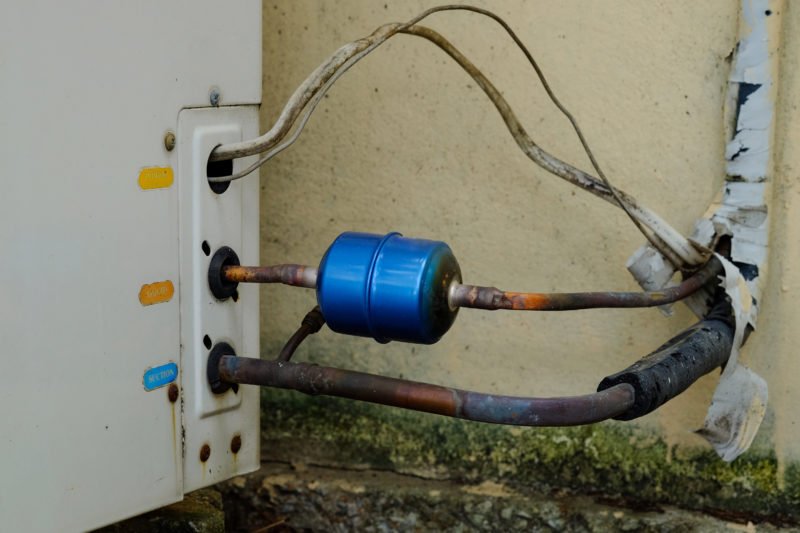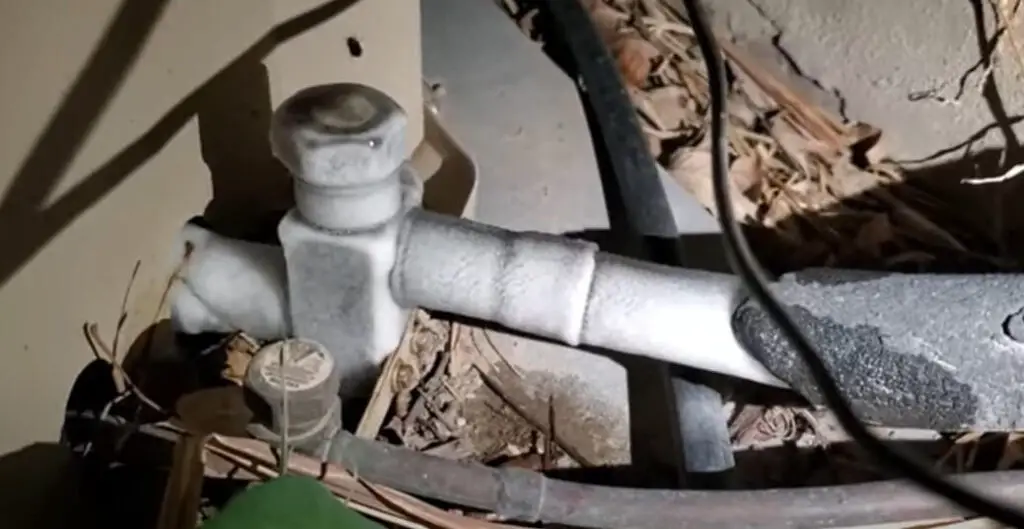Ways to Defrost a Frozen AC Pipe: Specialist Advice
Ways to Defrost a Frozen AC Pipe: Specialist Advice
Blog Article
This article following next pertaining to What Causes AC Pipes To Freeze? is really insightful. Check it out yourself and decide what you think about it.

Introduction
Discovering that your a/c pipeline is iced up can be worrying, especially during warm summertime when you rely on your air conditioner the most. Understanding what to do in such a situation is essential to prevent further damages to your air conditioning system and ensure your convenience inside.
Comprehending the Causes
A number of factors can add to the cold of an a/c pipe. Recognizing these reasons can assist you deal with the concern successfully.
Lack of Airflow
One usual reason for an icy a/c pipe is inadequate air movement. When the air flow over the evaporator coil is limited, it can trigger the coil to go down below freezing temperature, bring about ice development on the pipe.
Low Refrigerant Levels
Insufficient refrigerant degrees in your air conditioner system can also lead to an icy pipeline. Low refrigerant degrees can create the pressure in the system to drop, bring about the cold of moisture on the evaporator coil.
Cold Weather Conditions
In chillier climates, freezing temperature levels outside can add to the freezing of air conditioner pipes. If your a/c unit is not effectively protected or if there are leaks in the ductwork, chilly air can infiltrate the system, causing the pipe to ice up.
Dirty Air Filters
Unclean or clogged air filters can limit air movement in your a/c system, causing various issues, consisting of a frozen pipe. It's vital to change or clean your air filters regularly to make sure proper air movement and stop ice buildup.
Indications of a Frozen AC Pipe
Acknowledging the indicators of a frozen a/c pipeline is vital for punctual activity.
Minimized Airflow
If you observe a considerable decrease in airflow from your vents, it could show an icy pipe.
Ice Buildup on the Pipe
Visible ice build-up on the cooling agent line or the evaporator coil is a clear indication of an icy a/c pipe.
Weird Sounds from the Unit
Unusual audios, such as hissing or bubbling, originating from your AC device can signal that there's ice existing on the pipe.
Immediate Actions to Take
When faced with a frozen air conditioner pipeline, it's necessary to act promptly to avoid more damages to your cooling system.
Switching off the air conditioning
The very first step is to turn off your a/c unit to stop the system from running and exacerbating the issue.
Looking for Blockages
Evaluate the area around the interior device for any type of obstructions that may be obstructing air movement, such as furniture or curtains.
Defrosting the Pipe
You can utilize gentle methods like positioning towels taken in warm water around the icy pipe to help thaw it gradually.
Preventive Measures
Taking safety nets can assist avoid future occurrences of an icy air conditioning pipeline.
When DIY Methods Fail
If your attempts to thaw the pipeline or address other concerns are unsuccessful, it's time to call an expert.
Relevance of Hiring a Professional HVAC Technician
A licensed HVAC technician has the proficiency and devices essential to diagnose and fix concerns with your AC system safely and successfully.
Normal Maintenance Checks
Schedule regular maintenance get in touch with an expert HVAC service technician to make certain that your AC system is running efficiently.
Changing Air Filters
Frequently replace or clean your air filters to avoid air flow restrictions and maintain optimal performance.
Protecting Exposed Pipes
If your air conditioning pipes are exposed to cool temperature levels, take into consideration protecting them to avoid freezing throughout winter season.
Seeking Professional Help
If DIY methods fail to resolve the concern or if you're not sure about just how to proceed, it's best to look for support from a certified HVAC service technician.
Conclusion
Managing an icy AC pipeline can be a discouraging experience, but understanding just how to respond can aid reduce damages and restore comfort to your home. By recognizing the causes, identifying the signs, and taking timely action, you can successfully deal with the issue and prevent future events.
Frozen AC Line: Why It Happens & What To Do About It
A frozen AC line can be a rather peculiar sight in a place like Phoenix, Arizona where nothing ever freezes. In this post, we’ll discuss what makes an air conditioner line frozen – and what you can do about it.
Dirty Air Filters
Did you know that you should be cleaning or replacing your air filters on a monthly basis? Failing to do this can result in airflow issues that, in turn, cause your evaporator coils and lines to freeze over. You’ll notice a buildup of ice on both components, although the buildup on your pipes will, of course, be more evident unless you open your air condition up to reveal the coils.
What To Do About It
Give your air filter a good cleaning if it’s reusable. If not, replace the filter outright. Next, switch your air conditioner’s fan setting on and leave it there for 2-3 hours. This will draw warm air in, helping to thaw your evaporator coil. You can also check out this article for some tips on cleaning the coils themselves if you’d like to speed the process up. Before you switch the unit back to its normal state, make sure the supply vents are completely unobstructed and free of dust or other debris.
If you keep having this issue even after replacing your filters regularly, contact a local HVAC repair company and have them inspect your evaporator coil, ductwork, and any other components that may be at fault. If you live in the Phoenix, Arizona area, give American Home Water and Air a call.
Low Refrigerant Levels/Leakage
What To Do About It
Contrary to what air conditioner “recharge” companies often tell their clients about refrigerant, it should never need to be simply refilled. You see, refrigerant runs in what experts refer to as a “closed loop.” Refrigerant really shouldn’t be leaving that loop. If it is, you’ve got a leak.
Paying someone to come and pump more refrigerant into your system (aka “recharge” it) isn’t the solution. Doing that will simply kick the can down the road. Besides, refrigerant leaks can be harmful to the environment and people in your home.
Rather, you need to take care of the leak with the help of a technician. Check out this article for some more information about dealing with air conditioners that are leaking refrigerant. Before you contact a technician, switch your thermostat to the off position. Then, switch the fan setting on and let it run for 2-3 hours so the unit can thaw.
Improper Temperature Setting
Improper temperature settings can also cause a drop in your air conditioner’s pressure. What many people don’t realize is that air conditioners are actually designed to run when temperatures have fallen above roughly 60 degrees Fahrenheit. If you run the unit when it’s cold outside, you’ll run into many issues, including frozen components.

We were made aware of that write-up about What Do I Do If My AC Pipe Is Frozen through a good friend on a different web address. Kindly take a moment to distribute this blog posting if you appreciated it. Many thanks for going through it.
Click Here Report this page